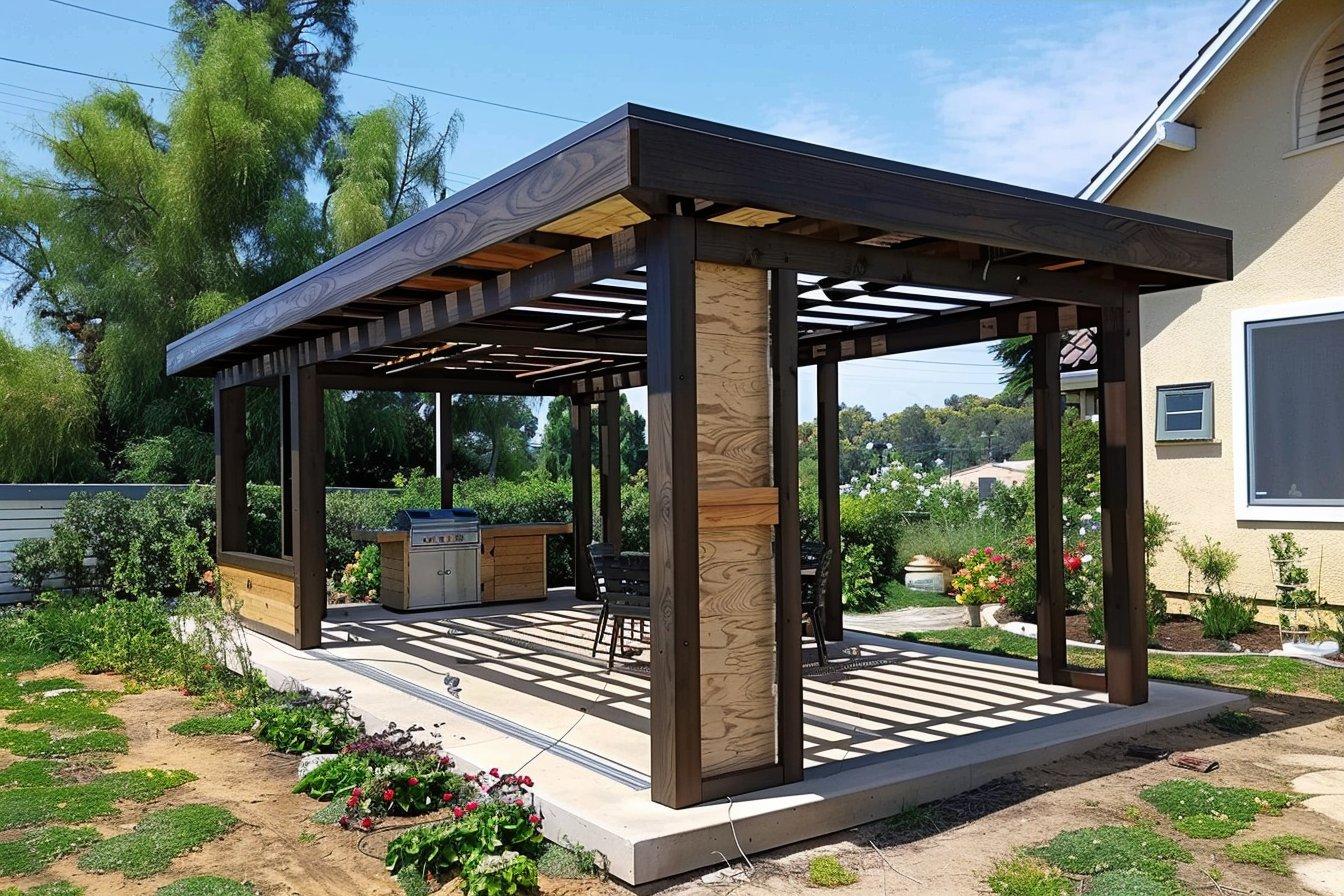Introduction to Pergolas: A Perfect Outdoor Addition
Pergolas have become a popular choice for homeowners looking to enhance their outdoor spaces. These structures not only add aesthetic appeal but also provide much-needed shade and a sense of privacy. With the growing trend of outdoor living, pergolas are an excellent investment for those who enjoy spending time in their gardens or patios. Whether you’re hosting a summer barbecue or simply relaxing with a book, a pergola can transform your outdoor area into a comfortable and stylish retreat.

What Makes Pergolas a Desirable Outdoor Feature?
Pergolas serve multiple functions in outdoor design. Primarily, they provide filtered shade through their slatted roof design, protecting from harsh sunlight while still allowing air circulation and some sunshine. This partial coverage creates a comfortable microclimate underneath, extending the usability of outdoor spaces during hot summer days. Additionally, pergolas establish a defined outdoor room, creating structure within a garden or yard and serving as an architectural focal point.
Beyond functionality, pergolas add significant visual interest to properties. Their vertical elements draw the eye upward, creating the impression of a larger space. They can be customized with climbing plants like wisteria, jasmine, or grapevines, transforming into living structures that change with the seasons. Many homeowners also add features like retractable canopies, outdoor curtains, or string lights to enhance both the comfort and ambiance of their pergola spaces.
Types of Pergolas for Sale in Today’s Market
The market offers numerous pergola options to suit different preferences, spaces, and budgets. Traditional wood pergolas remain popular for their natural appearance and ability to be customized. Cedar, redwood, and pressure-treated pine are common choices, each offering different levels of durability and maintenance requirements. Wood pergolas can be stained or painted to match existing outdoor elements and tend to weather beautifully over time.
For lower maintenance requirements, vinyl and aluminum pergolas have gained significant market share. These materials resist rot, insects, and weathering, requiring minimal upkeep beyond occasional cleaning. Fiberglass pergolas represent a premium option, offering exceptional strength-to-weight ratio and remarkable durability against the elements. Steel pergolas provide maximum structural stability for larger installations or areas with extreme weather conditions.
Pre-fabricated pergola kits have also become widely available, offering DIY-friendly installation with varying degrees of customization. These kits typically include all necessary components and hardware, along with detailed assembly instructions, making them accessible to homeowners with basic construction skills.
Custom Pergola Installation: What to Expect
Custom pergola installations begin with a consultation and design phase, where professionals help translate your vision into a practical structure that complements your home and landscape. This process typically includes material selection, sizing determinations, and decisions about additional features like built-in seating, electrical wiring for lighting, or integration with existing structures.
The installation process usually starts with securing permits if required by local building codes. Professionals will then mark the location, prepare the foundation, and install the support posts. Depending on the design, concrete footings may be necessary to ensure stability. The beam structure, rafters, and any additional elements are then assembled according to the design specifications.
Custom installations allow for unique features that pre-fabricated options might not offer. These can include curved elements, unusual dimensions to fit specific spaces, built-in planters, integrated irrigation systems for climbing plants, or specialty features like retractable canopies or misting systems for cooling.
Finding Reliable Outdoor Pergola Contractors in Your Area
Finding qualified contractors for pergola installation requires thorough research. Start by seeking recommendations from friends, neighbors, or local garden centers. Online platforms like Houzz, Angie’s List, or HomeAdvisor can help identify local professionals with verified reviews. When evaluating potential contractors, request to see previous pergola projects they’ve completed and ask for references from past clients.
When interviewing contractors, discuss their experience specifically with pergolas, as these structures require particular skills for proper construction and finishing. Ask about their familiarity with local building codes and permit requirements. Reputable contractors will provide detailed written estimates outlining materials, labor costs, timeline, and warranty information. They should also carry appropriate insurance and licensing for your protection.
Consider contractors who specialize in outdoor living spaces rather than general contractors, as their expertise with similar projects will likely result in better design recommendations and implementation. Many landscape architects and outdoor living specialists offer comprehensive services from design through construction, providing a seamless experience.
Cost to Install a Pergola: Pricing Breakdown
Pergola installation costs vary significantly based on material, size, design complexity, and whether you choose prefabricated or custom options. The average cost range for a professionally installed pergola spans from $2,500 to $10,000, with high-end custom designs potentially exceeding $15,000.
Material choice significantly impacts cost. Pressure-treated pine represents the most economical option at approximately $15-25 per square foot installed. Cedar and redwood fall in the mid-range at $25-35 per square foot, while aluminum and vinyl typically cost $35-60 per square foot. Premium materials like fiberglass or exotic hardwoods can reach $60-100+ per square foot installed.
| Material | Size (10’x10’) | Size (12’x16’) | Advantage |
|---|---|---|---|
| Pressure-Treated Pine | $1,500-2,500 | $3,000-5,000 | Most affordable |
| Cedar | $2,500-3,500 | $5,000-7,000 | Natural insect resistance |
| Vinyl | $3,500-6,000 | $7,000-10,000 | Zero maintenance |
| Aluminum | $3,500-6,000 | $7,000-10,000 | Weather resistant |
| Fiberglass | $6,000-10,000 | $12,000-18,000 | Superior durability |
Prices, rates, or cost estimates mentioned in this article are based on the latest available information but may change over time. Independent research is advised before making financial decisions.
Additional cost factors include foundation requirements, complexity of design, site accessibility, and extra features. Concrete footings add $200-500 to the project. Electrical wiring for lighting starts around $500. Retractable canopies or shade systems typically add $1,000-3,000. Custom elements like built-in seating or planters can increase costs by $500-2,000 depending on materials and design complexity.
Labor costs typically account for 30-40% of the total project budget. DIY installation using prefabricated kits can save considerably on labor costs, with kits ranging from $1,500-5,000 depending on size and materials. However, professional installation ensures structural integrity and may be required for permit approval in some municipalities.
Conclusion
Pergolas represent a valuable addition to outdoor living spaces, offering a blend of practical functionality and aesthetic appeal. Whether you choose a simple prefabricated kit or invest in a custom design, these structures create defined outdoor rooms that extend your living space into the garden. By understanding the various material options, installation considerations, and cost factors, you can make informed decisions about incorporating a pergola into your landscape design. With proper planning and construction, a pergola will provide years of enjoyment and enhance your property’s value while creating a signature outdoor retreat.



